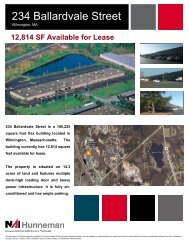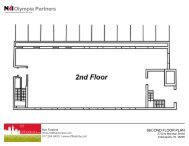ankrupt. Large retailers continue to close significant numbers of stores nationwide due to current and forecasted consumer sentiment. Asia Pacific Overview Asia Pacific investment markets have not been immune to the global volatility, most recently with the eurozone debt crisis. In the Asia Pacific region, Hong Kong, Singapore, Japan, and Australia all saw transactions slow in Q3 2011, although China’s volume for both commercial property and land continued to increase, but at a far slower pace. There have been some major governmental interventions through tighter property regulations over the last 12 months in places like Singapore, Hong Kong and China. These regulations have primarily been directed to control spiraling residential values and reduce speculation. Such policies include restrictions on the number of properties one family can own in one city, larger down payment requirements, higher stamp duty (tax) on the seller if the property is traded within three to five years of acquisition, as well as the introduction of annual property taxes. As a result, there has been some cooling on the transactional volumes of residential properties in all three markets. Anecdotally, there is some evidence of residential prices beginning to drop in China and there have been several cases of early buyers protesting developer price discounts to newer buyers. Hong Kong is beginning to see some softening in residential values, albeit after the last two years of major rises in value, and Singapore has been able to basically hold values to date. None of these government regulations have been directed toward the commercial property sector, which in markets like China, has residential developers moving into commercial development. Aside from residential and commercial markets, key hotel markets in Asia have seen excellent growth. Best performing markets in Asia, which are projected to achieve double digit growth in RevPAR for 2011, include Singapore, Beijing and Hong Kong with continued but slower growth in <strong>2012</strong>. Singapore has seen some of the highest levels of supply growth in the region with a lot more in the pipeline. Beijing is forecasted to have the highest level of demand growth in 2011, whereas Hong Kong is expected to finish the year with the highest level of ADR growth. The ability to get debt financing for new hotel construction is becoming more difficult in China. Office As the eurozone sovereign debt crisis has evolved, rapid rental rate increases have ceased in Singapore and Hong Kong and are now in a downward mode, with these markets having clearly peaked. Tokyo, Kuala Lumpur, Seoul, Ho Chi Minh City and Taipei are at or approaching the bottom of declining rent phases and will start to see higher rates. Jakarta, Manila, Shanghai and Beijing have already seen healthy rental increases but are forecast to see slower growth in <strong>2012</strong>. Retail There are early signs of rental growth in Singapore and Hong Kong. Tokyo, Jakarta and Shanghai have reached the bottom and should start to see stronger, rising rents. Manila, <strong>2012</strong> <strong>Global</strong> <strong>Market</strong> Report n www.naiglobal.com 15
Area Type Q1 2010 Q2 2010 Q3 2010 Q4 2010 Q1 2011 Q2 2011 Q3 2011 Asia Pac Commercial $ 17,192,943,561 $ 14,039,182,064 $ 20,051,078,142 $ 25,251,218,789 $ 21,503,391,516 $ 20,492,011,589 $ 18,388,955,819 Land $ 73,723,342,403 $ 41,127,619,910 $ 56,985,104,261 $ 91,517,897,184 $ 82,438,288,775 $ 57,254,175,662 $ 74,415,868,629 Europe Commercial $ 27,064,359,069 $ 27,054,246,831 $ 25,839,117,962 $ 42,661,539,095 $ 37,379,631,966 $ 35,722,913,615 $ 34,843,975,506 Land $ 2,107,758,023 $ 2,061,090,749 $ 2,264,360,265 $ 3,017,932,542 $ 1,801,765,383 $ 1,945,274,100 $ 2,350,726,612 Americas Commercial $ 11,986,348,608 $ 17,283,088,673 $ 23,856,108,169 $ 39,425,246,472 $ 21,643,962,766 $ 37,944,154,803 $ 31,802,368,075 Land $ 1,177,306,212 $ 1,378,077,610 $ 1,587,973,681 $ 2,157,422,220 $ 1,846,346,110 $ 1,852,157,503 $ 1,931,185,948 Kuala Lumpur and Beijing retail rents have already seen reduced growth in recent quarters, and we expect further slowing. Industrial Rental rates in Singapore and Hong Kong appear to have peaked, with a softening of rates forecast for <strong>2012</strong>. In contrast, Tokyo industrial rates are close to the bottom with some increases anticipated over the coming quarters. Beijing and Shanghai have achieved some good rental growth and will likely see growth projection scale back in the coming period. Investment While the Americas and Europe still have higher annual transaction volumes for commercial property sales above US $10 million, there is a rising trend in commercial property transaction volumes in Asia and a sleeping giant (land sale transactions) that is not reflected in commercial building sales figures. The chart above displays transaction volumes in recent years. The high land transaction volumes in Asia reflect the high cost of land in major, developed, urban centers in Asia as well as the land sale activity to meet the urbanization of populations and the resulting huge demand for new real estate developments in growing, developing countries like China. Source RCA All Property Types - <strong>Global</strong>ly <strong>Market</strong> Volume (in $mil) Cap Rate NYC Metro 39,679 6.30% London Metro 34,479 5.81% Beijing 31,397 Shanghai 25,528 Tokyo 24,047 5.54% Singapore 22,642 6.68% Hong Kong 22,555 3.27% DC Metro 19,404 6.45% Paris 18,388 6.32% Seoul 17,533 6.68% LA Metro 16,024 6.29% SF Metro 12,678 6.42% Wuhan 11,698 Chicago 11,291 7.06% Kunming 10,716 Tianjin 10,323 Suzhou 10,112 Dalian 9,272 Chongqing 9,244 Hangzhou 8,931 Source RCA In addition, Asia grabs 13 of the top 20 spots for the most active global property markets in the last 12 months (as of November 2011). Major Trends in China China now has the highest annual GDP growth rate of any major global economy (9.1%), the largest foreign currency reserves in the world (US $3.2 trillion), the second largest economy in the world (almost US $7 trillion), the largest standing military in the world (2.25 million), the largest population in the world (almost 1.34 billion) and was the winner of the most gold medals in the 2008 Olympics (51 gold medals). European financial ministers must now kowtow to China for Chinese financial support to invest in the €1 trillion European Financial Stability Fund (EFSF) bond fund, needed to rescue Greece and the eurozone. US Treasury Secretary Timothy Geithner traveled to China to encourage the Chinese government to purchase US debt. It is difficult to miss how dramatically the global economic cards have turned in favor of the Chinese in the last few years. The Chinese economy is predicted to grow 8.5% in <strong>2012</strong>, the slowest growth rate in a decade. The world’s second biggest economy is cooling as weakness in developed <strong>2012</strong> <strong>Global</strong> <strong>Market</strong> Report n www.naiglobal.com 16
- Page 1 and 2: 2012 Global Market report Values, t
- Page 3 and 4: n n n table of contents General Inf
- Page 5 and 6: Global Outlook US Year in Review As
- Page 7 and 8: On the Road to Recovery % of Loss S
- Page 9 and 10: 55% (1.1 million) owning and 45% (8
- Page 11 and 12: short-term leases, the multifamily
- Page 13 and 14: Alberta is home to Canada’s oil a
- Page 15: Office The sovereign debt crisis an
- Page 19 and 20: obust telecom infrastructure and av
- Page 21 and 22: egion’s cities. Nevertheless, lea
- Page 23 and 24: For 2012, absorption in the commerc
- Page 25 and 26: n us Highlights - northeast region
- Page 27 and 28: n us Highlights - midwest region n
- Page 29 and 30: n us Highlights - West region n Ari
- Page 31 and 32: Adelaide, Australia Brisbane, Austr
- Page 33 and 34: Sydney, Australia Beijing, China Co
- Page 35 and 36: Shanghai, China Shenzhen, China Con
- Page 37 and 38: Chennai, India Mumbai, India Contac
- Page 39 and 40: Jakarta, Indonesia Tokyo, Japan Con
- Page 41 and 42: Christchurch, New Zealand Wellingto
- Page 43 and 44: Taipei, Taiwan Ho Chi Minh City, Vi
- Page 45 and 46: Calgary, Alberta, Canada Edmonton,
- Page 47 and 48: Halifax, Nova Scotia, Canada Ottawa
- Page 49 and 50: Regina, Saskatchewan, Canada Contac
- Page 51 and 52: The Baltics (Latvia/Estonia/Lithuan
- Page 53 and 54: Helsinki, Finland Paris - lle de Fr
- Page 55 and 56: Tel Aviv, Israel Almaty, Kazakhstan
- Page 57 and 58: Amsterdam, The Netherlands Oslo, No
- Page 59 and 60: Moscow, Russia St. Petersburg, Russ
- Page 61 and 62: Madrid, Spain Stockholm, Sweden Con
- Page 63 and 64: Istanbul, Turkey Kiev, Ukraine Cont
- Page 65 and 66: Leeds, England, United Kingdom Lond
- Page 67 and 68:
Latin America sectIon contents Buen
- Page 69 and 70:
Rio de Janeiro, Brazil Sao Paulo, B
- Page 71 and 72:
San Jose, Costa Rica Contact NAI Co
- Page 73 and 74:
Guadalajara, Jalisco, Mexico Guanaj
- Page 75 and 76:
Mexico City, Mexico Contact NAI Mex
- Page 77 and 78:
Saltillo, Coahuila, Mexico San Luis
- Page 79 and 80:
Lima, Peru Caracas, Venezuela Conta
- Page 81 and 82:
Birmingham, Alabama Huntsville/Deca
- Page 83 and 84:
Little Rock, Arkansas Bakersfield,
- Page 85 and 86:
Oakland, California Orange County,
- Page 87 and 88:
San Francisco, California Ventura C
- Page 89 and 90:
Hartford, Connecticut Wilmington, D
- Page 91 and 92:
Fort Lauderdale, Florida Ft. Myers/
- Page 93 and 94:
Miami, Florida Ocala/Gainesville, F
- Page 95 and 96:
Tampa Bay, Florida Atlanta, Georgia
- Page 97 and 98:
Boise, Idaho Southeast (Idaho Falls
- Page 99 and 100:
Fort Wayne, Indiana Indianapolis, I
- Page 101 and 102:
Des Moines, Iowa Sioux City, Iowa C
- Page 103 and 104:
Baton Rouge, Louisiana Lake Charles
- Page 105 and 106:
Greater Portland, Maine Baltimore,
- Page 107 and 108:
Greater Springfield, Massachusetts
- Page 109 and 110:
Minneapolis/St. Paul, Minnesota Jac
- Page 111 and 112:
Billings, Montana Bozeman, Montana
- Page 113 and 114:
Omaha, Nebraska Las Vegas, Nevada C
- Page 115 and 116:
Portsmouth, New Hampshire Atlantic
- Page 117 and 118:
Ocean/Monmouth Counties (“Shore M
- Page 119 and 120:
Las Cruces, New Mexico Albany, New
- Page 121 and 122:
Westchester, New York Asheville, No
- Page 123 and 124:
Raleigh/Durham, North Carolina Farg
- Page 125 and 126:
Cincinnati, Ohio Cleveland, Ohio Co
- Page 127 and 128:
Oklahoma City, Oklahoma Tulsa, Okla
- Page 129 and 130:
Berks County, Pennsylvania Bucks Co
- Page 131 and 132:
Philadelphia, Pennsylvania Philadel
- Page 133 and 134:
Wilkes-Barre/Scranton/Hazleton, Pen
- Page 135 and 136:
Sioux Falls, South Dakota Chattanoo
- Page 137 and 138:
Memphis, Tennessee Nashville, Tenne
- Page 139 and 140:
Corpus Christi, Texas Dallas, Texas
- Page 141 and 142:
Houston, Texas Contact NAI Houston
- Page 143 and 144:
Salt Lake City, Utah Washington Cou
- Page 145 and 146:
Northern Virginia Seattle/Puget Sou
- Page 147 and 148:
Madison, Wisconsin Milwaukee, Wisco
- Page 149 and 150:
n Glossary n Acre Area of land equa













